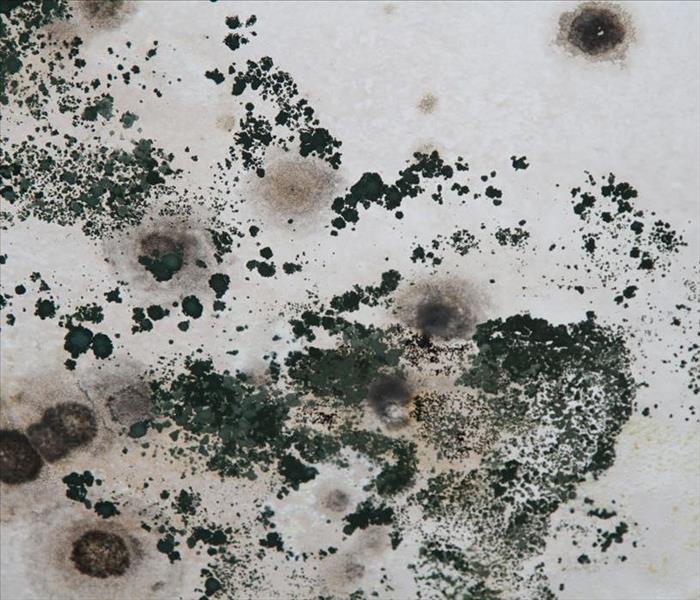Recent Mold Remediation Posts
Finding Hidden Mold
9/2/2020 (Permalink)
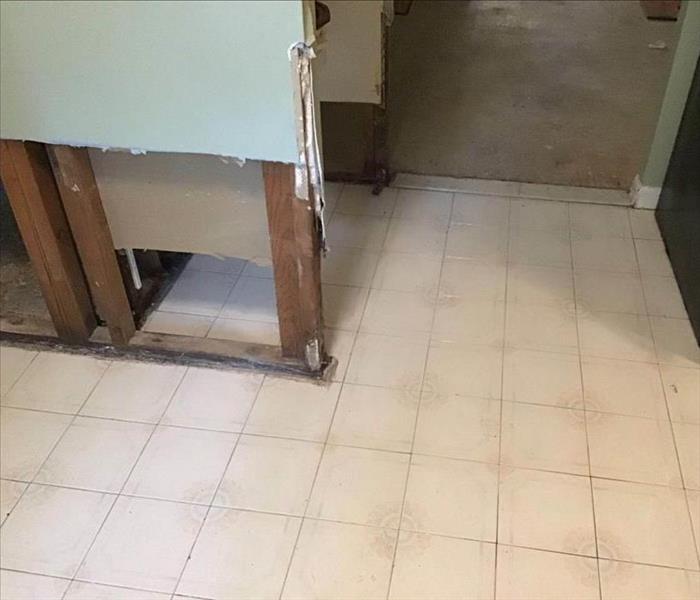 Dealing with mold can be an ongoing issue, especially if the source can’t be found.
Dealing with mold can be an ongoing issue, especially if the source can’t be found.
When you enter your Doylestown, PA, home and there is a musty odor, it means you have mold growth. Unfortunately, unless there has been known water damage, that fungi colony could be steadily growing out of sight. Along with checking known areas for dampness, seeking the help of an indoor environmental specialist can help you locate the problem and its source.
Signs of Hidden Damage
Along with the odor, there are some known areas for mold to lurk. Check walls and ceilings for cracks, soft spots, or signs of water damage. Also, inspect the following areas:
Behind the refrigerator
Under stacked newspapers or cardboard
Below sinks and faucets and around pipes
Wallboard around windows
Ventilation ducts
Carpet or rugs that have been wet
Nonvisible side of ceiling tiles
Drywall between studs or areas that have been flooded
If you find mold in any of these areas, it’s time to call mold remediation and restoration professional to return your home to normal. If you still can’t find the source of the odor, consider having a mold test done.
Testing for Mold
A professional indoor environmental specialist has an array of tools to locate hidden mold and water damage and different tests to its presence. These include:
Air Testing – Air samples are taken to test mold spore concentration, which can help determine the extent of the hidden problem.
Surface Testing – Samples from various surfaces are taken to test for spore deposits and growth. This can help pinpoint areas with a higher concentration.
Bulk Testing – This test involves taking materials from the home to be examined at a lab. This method can tell the concentration of particles.
Culture Tests – To determine the species of mold, particle samples are allowed to grow in the lab.
Dealing with mold can be an ongoing issue, especially if the source can’t be found. An indoor environmental specialist has the latest tools to conduct tests and assessments to help get your home back to normal.
Why Quickly Repairing a Leaking Roof Prevents Mold Growth
7/23/2020 (Permalink)
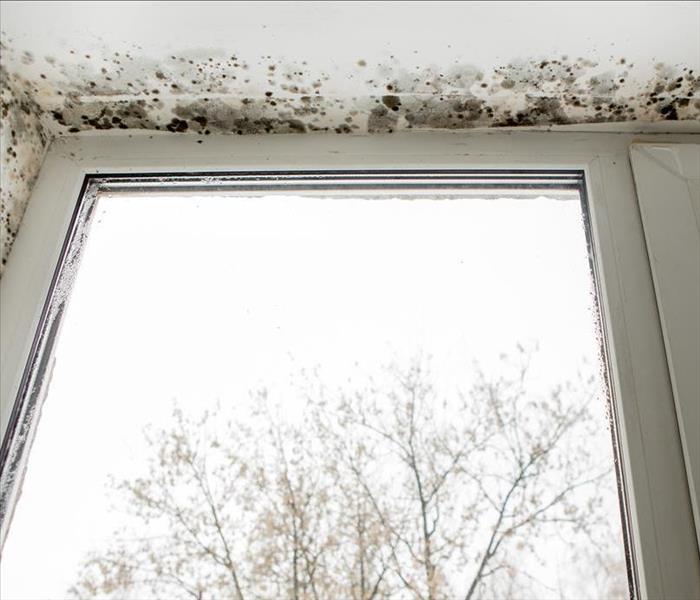 Excess moisture can also lead to warped wood and drywall.
Excess moisture can also lead to warped wood and drywall.
Even a small ceiling leak can lead to mildew, black mold, and other issues that can damage your business in Chalfont, PA. According to the Federal Emergency Management Agency, mold can grow on a surface in as little as 24 hours after being exposed to water. Mold needs just air and organic material — such as insulation, paper, and wood — to grow.
Where Can Water Come In?
Places where roofs leak include:
Broken shingles
Cracked flashing
Clogged gutters
Damaged skylights
Heavy snow or ice buildup
If there’s been a heavy wind or rainstorm in your area, look at your roof to make sure all the materials are in good shape and nothing is creating areas of standing water.
What Does Mold Damage Look Like?
Leaks can show up in different ways. You may see water spots, patches of dark paint, or plaster that’s bubbling. Excess moisture can also lead to warped wood and drywall.
If you discover a ceiling leak, look for:
Brown or gray spots on the ceiling
Visible mold growth
Musty smells, almost like rotting leaves, near the leaking area
What Should I Do if I Have a Roof Leak?
Quick action is your best bet against mold damage. Fix any leaks, keep water from continuing to build up, and start drying out the area.
If you decide to clean up the mold yourself, wear protective clothing, masks, and goggles to stay safe. Seal off the area with tarps or other plastic sheeting to keep the spores from traveling through the rest of the building. You can use store-bought mold and mildew removers or combine baking soda and white vinegar to make your own. After you’ve finished cleaning, run fans to dry the area thoroughly.
If there’s a lot of damage from black mold, get in touch with a mold remediation company. They can safely repair and restore your roof so you can get back to business.
Mold and Insurance Claims
6/17/2020 (Permalink)
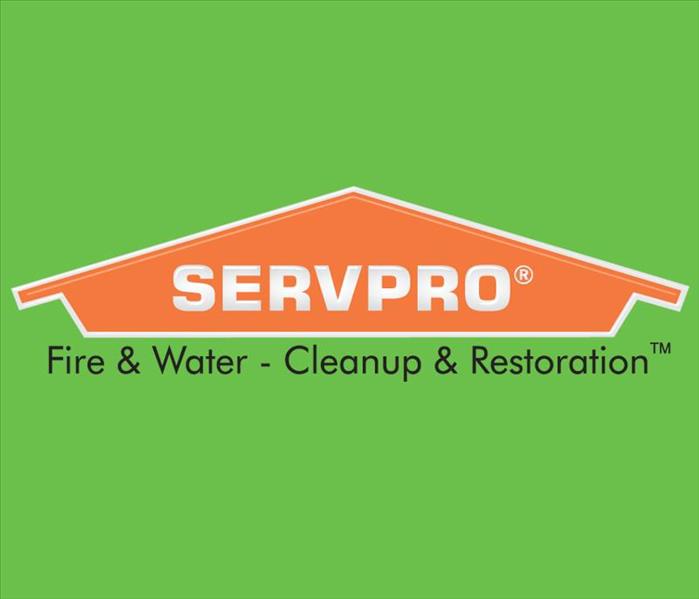 Odor removal techniques may be necessary to rid the building of the musty smell associated with mold.
Odor removal techniques may be necessary to rid the building of the musty smell associated with mold.
The situation with mold insurance claims is anything but simple. Will a commercial insurance policy cover a claim? the shortest answer is, it depends. A long time ago, mold damage was more readily covered than it is today. After an increase in the number and expense of claims in the 1990s, the insurance industry installed a fungus exclusion to commercial policies. The main point is that only in certain circumstances is fungus damage, repair, and cleanup covered. Two areas are typically covered: they include situations where water damage was the cause of mold growth and situations where water from fire-fighting equipment resulted in mold growth.
A Look at a Mold Claim
Many companies in Doylestown, PA, have fire sprinkler systems installed on their property. Sometimes this equipment leaks or accidentally discharges. The added presence of moisture could result in mold growth that requires cleanup from a professional mold mitigation franchise. In scenarios such as this, mold insurance claims may cover the following items:
Direct physical loss or damage
The expenses related to cleanup and replacement of materials
The cost of testing throughout the process
Even in cases that are covered, the company must show that it acted swiftly once a problem was discovered. For example, a slow leak that should have been repaired, and that eventually resulted in a mold problem, could be denied because the company did not take action to stop the leak.
A Look at Mold Remediation
The process of mold restoration involves a number of steps, many of which should be undertaken by certified technicians. Testing is critical to determine if mold is present in high concentrations and to identify the mold strain. A plan of action includes mold containment and removal and cleaning and sanitizing of all affected surfaces and belongings.
Odor removal techniques may be necessary to rid the building of the musty smell associated with mold. For more about mold insurance claims, it is best to talk with an agent.
A Moldy Situation: How To Fight Commercial Mold
6/10/2020 (Permalink)
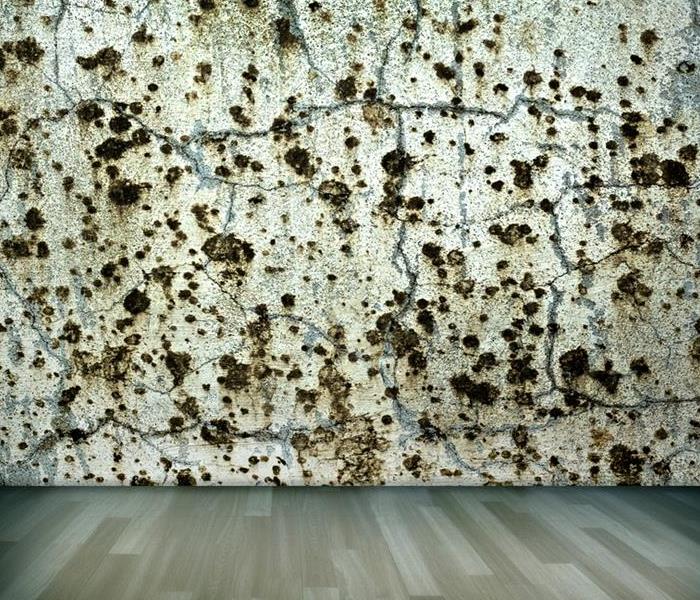 Mold removal is not a DIY project.
Mold removal is not a DIY project.
Mold spores are a part of life in Chalfont, PA, but they do not have to be a part of your commercial property. From carpet cleaning to disinfecting surfaces, fighting mold isn’t a one-person job. Controlling the moisture inside your building prevent mold damage, but that's only the tip of the iceberg. Here are four steps that can keep your property mold-free.
1. Just Keep Cleaning
Mold needs two conditions to thrive: darkness and dampness. Regularly cleaning your facility is essential to prevent excess moisture from building up and causing more mold to flourish. Make sure your commercial building is as dry as a desert, especially after a flood or other unexpected influx of water.
2. Don't Forget the Vents
Always inspect your air ducts for evidence of mold. They're one of the places where mold likes to hide the most. Airflow should be smooth and free. Regularly cleaning your air ducts can be vital to preventing mold problems.
3. Remember: It’s a Jungle Out There
The carpeting may warm up your commercial property, but it's also a desirable place for many microscopic creatures to call home. Chief among these unwanted residents is mold, and that is why it is crucial to do a deep carpet cleaning to evict mold spores from your carpet for good.
4. Know When It's Time To Bring Out the Big Guns
If you don’t want mold in your property, you may want to invest in a HEPA vacuum. It has a filter that your standard vacuum does not and that allows it to pick up virtually every itsy-bitsy thing that you cannot see.
Mold removal is not a DIY project. It can fester on surfaces that are invisible to the naked eye. That's why deep mold cleanup, including carpet cleaning, is required to pick up any little remnants of mold in your property. If you suspect that your commercial property has mold problems, seek out a mold removal professional to quickly return your business to normal.
What To Know About Mold and How To Prevent its Growth
4/27/2020 (Permalink)
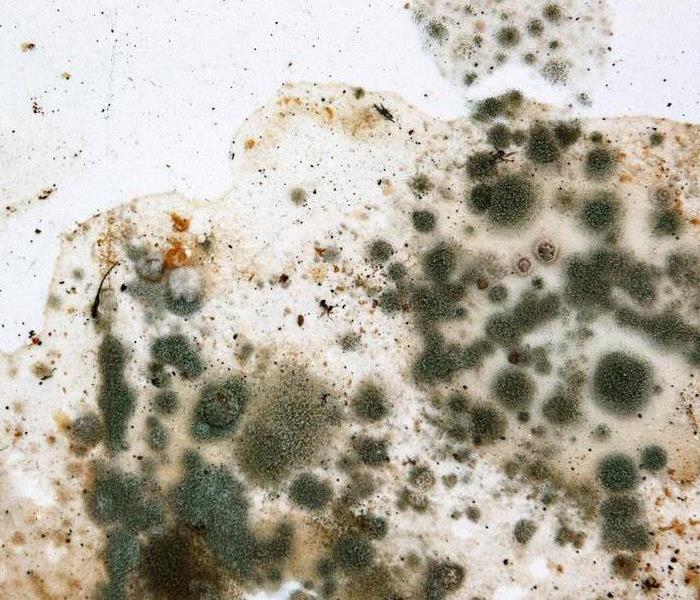 Mold is a fungus that grows best in dark and damp places.
Mold is a fungus that grows best in dark and damp places.
Performing a carpet cleaning at your Doylestown, PA, business is one way to help prevent mold problems. However, if removing mold is the aim behind the cleaning there are a few things you may want to understand about mold first.
1. What Mold Is
It’s important to note that mold is a fungus. This means that it grows by feeding off organic materials and water, in areas of dim or no light. Mold spores spread into colonies which can then take on a fuzzy or slimy appearance in a range of colors.
2. Where It Grows
Mold is commonly found in areas around easy access to water or water damage. This can include around plumbing, under the roof, basement areas, or spaces where water can be tracked in. Businesses with carpeting in their lobby may choose to have carpet cleaning done regularly as a preventative measure. Alternatively, the use of welcome mates can be used to keep water from being tracked through the company during wet seasons.
3. How To Remove It
If you think you may have mold at your place of business it’s highly recommended to contact a local remediation service. These professionals will have the tools and knowledge needed to contain the mold to prevent spreading, as well as the ability to remove any spores and make repairs. They can also help recommend mitigation measures such as cleaning regularly, repairing damage, and keeping water from collecting in places without appropriate drainage. Keeping gutters and drainage systems clear of debris can also help prevent water backup which has the potential to also lead to mold damage.
Carpet cleaning is one way to help prevent mold as the cleaners used may be able to deter growth. However, if you believe you have a mold problem at your place of business it’s best to contact a professional. Mold is a fungus that grows best in dark and damp places, and a remediation service will be best equipped to contain and remedy the problem before it spreads further.
Ideal Mold Growth Conditions
1/24/2019 (Permalink)
Although we all hate to admit it, we all have found mold in our showers or on our shower curtain at least once in our life. You may wonder what are the exact conditions that mold needs to grow? Here are the 4 critical requirements mold needs to grow.
What are mold spores? Mold spores are the very tiny reproductive units of mold and fungi and vary in size from 3 to 40 microns. These mold spores are everywhere, both inside buildings and outside as well and it is perfectly normal! That is why there is no true way to eliminate these.
What does mold feed on? Basically any organic substance can be a food source as they contain carbon molecules. The most popular mold food in homes are wood, paper and organic fibers.
Unfortunately for us humans, mold prefers the same temperatures we do! This means that mold growth can occur in many places in a building, even the fridge!
Many of us know mold thrives in moist areas, preferable in places with a relative humidity of 70%. Areas in homes where water can gather or pool will provide an even better place for mold growth.
Content by: http://www.fsec.ucf.edu/en/consumer/buildings/basics/moldgrowth.htm
Mold, Mold & More Mold!
1/8/2019 (Permalink)
Mold is everywhere.
No, that is not an exaggeration. Spores of mold are microscopic entities floating in the air which can enter your home or business through a cracked window, open door, AC/heating systems and possibly on your pet.
These facts are not meant to scare you. Not all molds are dangerous and it is important to understand that mold can be present without causing harm. Mold remediation is useful for those who are prone to allergies or when discovered in a heavily populated building such as a school.
There are, however, certain types of mold that must be removed immediately.
Toxic Black Mold also emits an indistinguishable, fowl smell that will lead you right to its location.
Due to the potential dangers toxic black mold poses, it is important to begin the remediation process quickly. SERVPRO follows a strict process to effectively remove mold from an affected area.
The process:
- Mold Containment-the affected area is sealed shut as to not release spores
- Air Filtration-cleaning the air of spores
- Removing Mold and Mold-Infested Materials-some materials must be thrown away
- Cleaning Contents and Belongings
- HEPA processes -used to remove mold/mold spores, clean and seal.
For more about our mold remediation process and about mold in general, visit our mold page.
Content & picture by:https://www.oldhouseonline.com/repairs-and-how-to/mitigating-mold





 24/7 Emergency Service
24/7 Emergency Service



